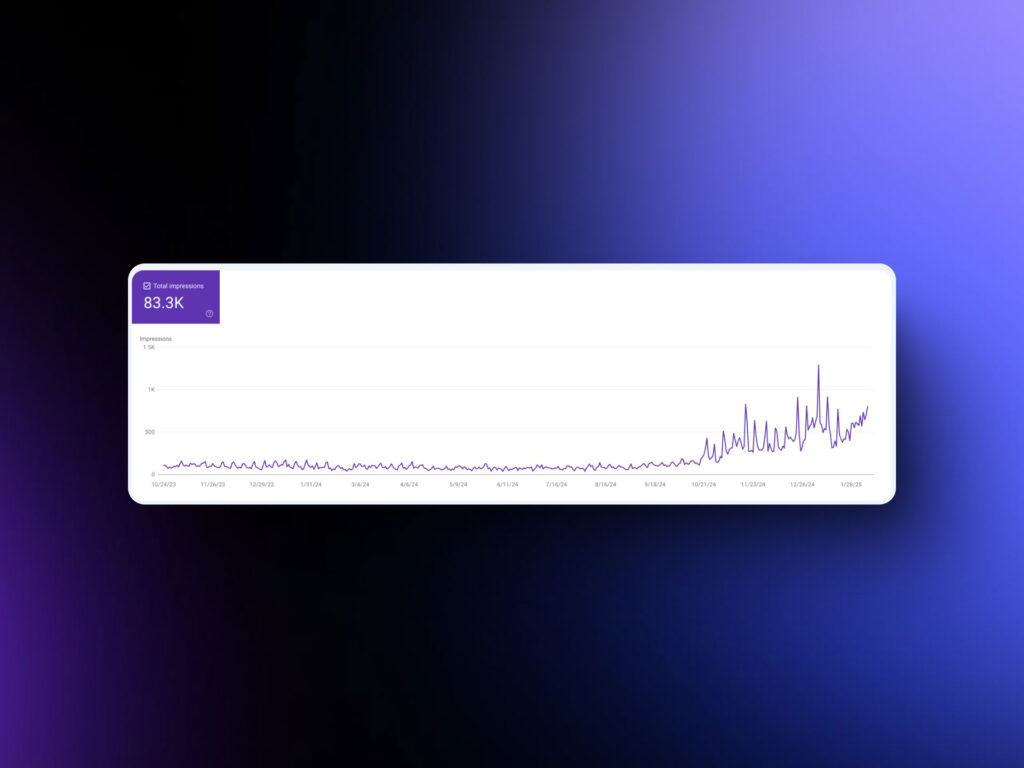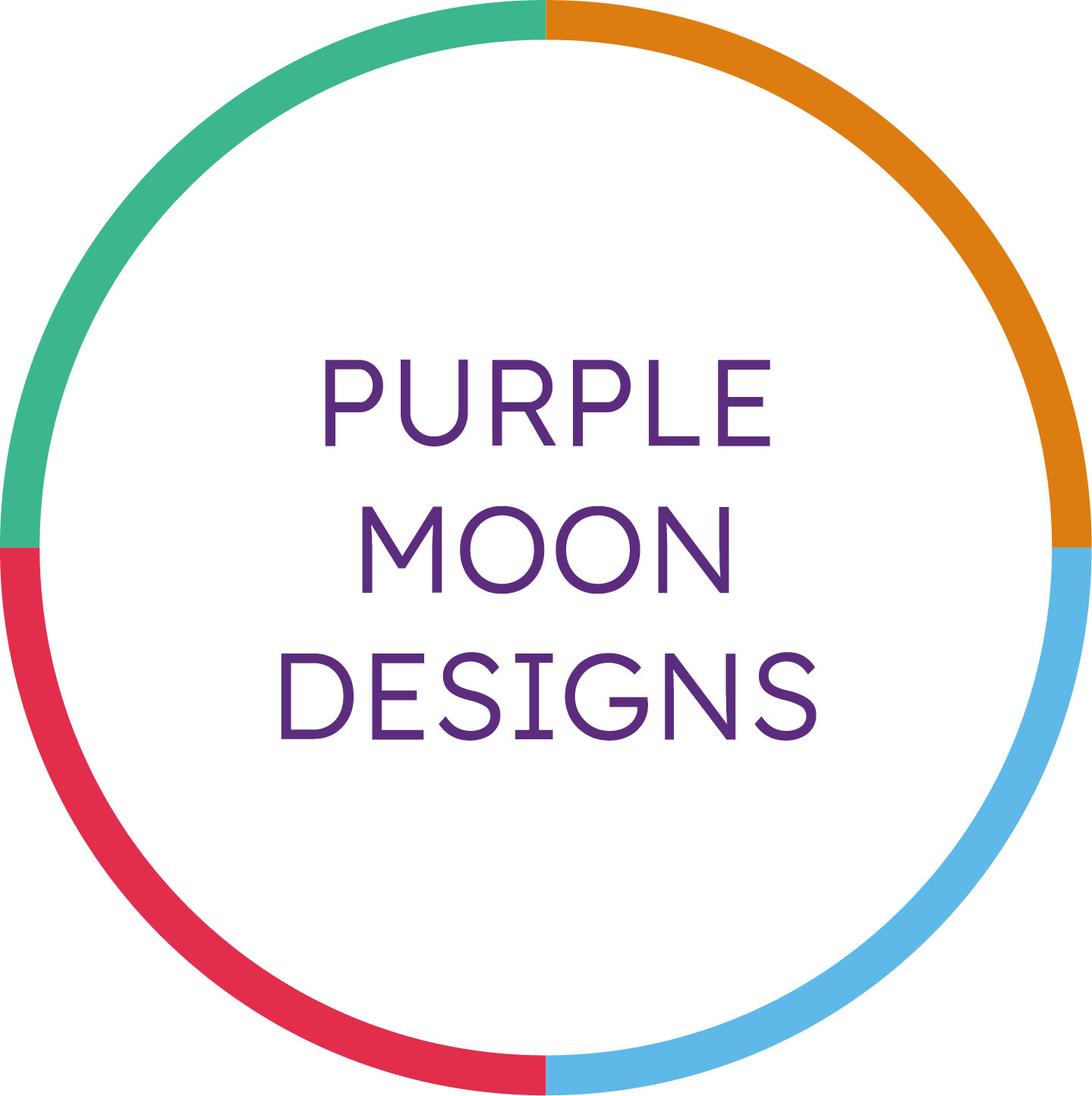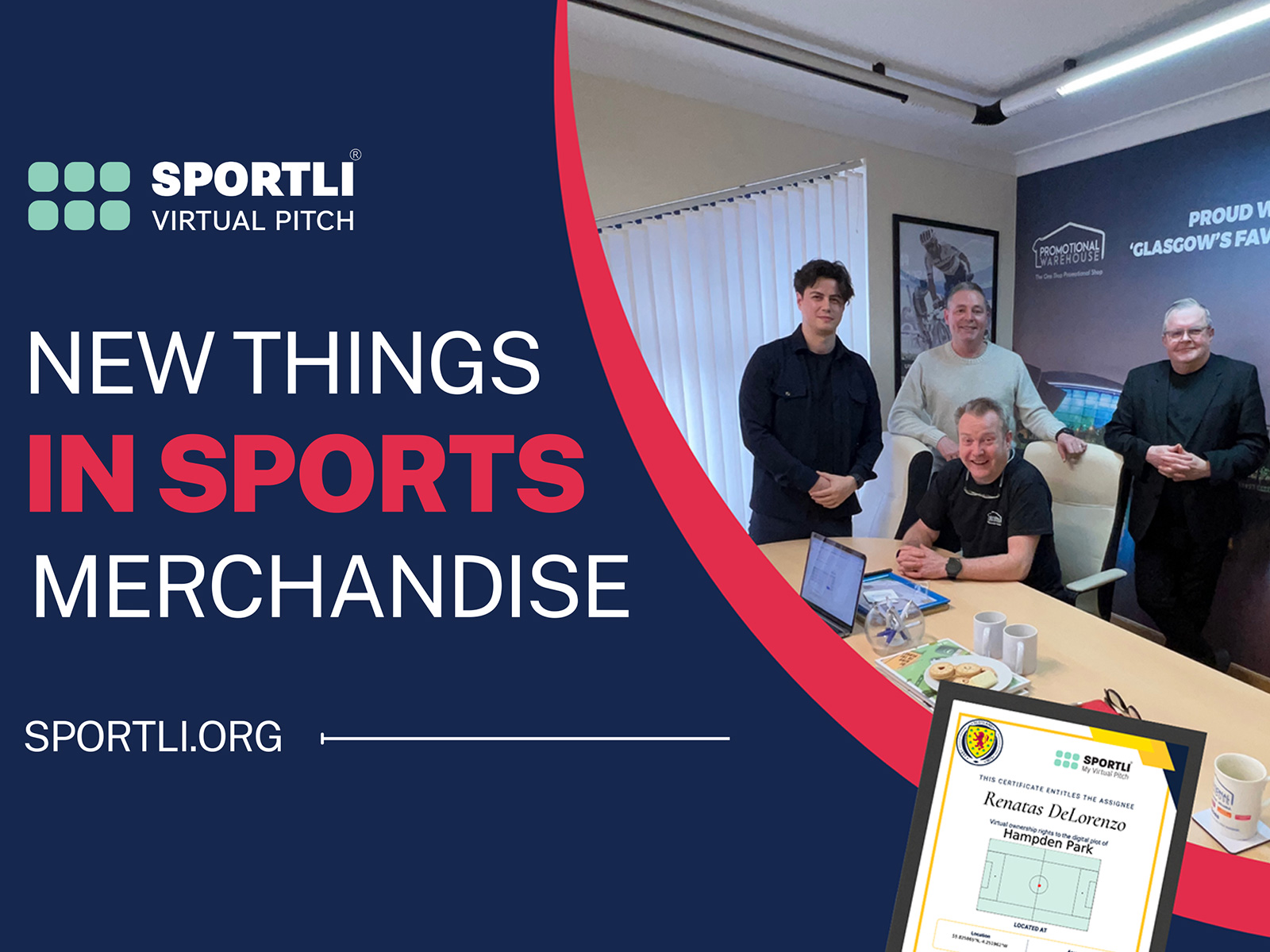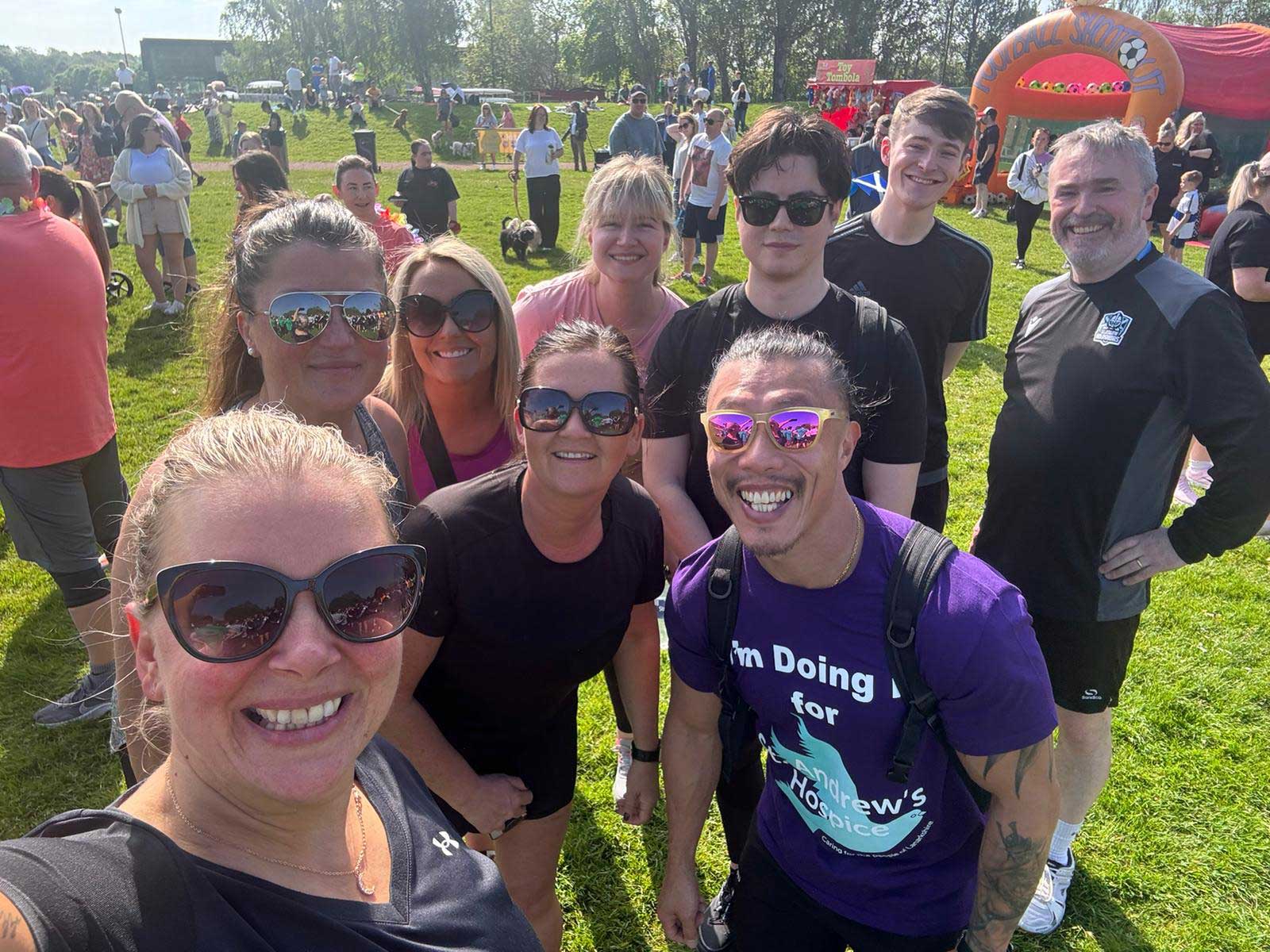I’ve started Purple Moon Designs back in 2014 (time flies). We’re a design and development agency that’s grown over the years to focus on branding, website design, and custom software solutions. As a local company in Glasgow, we have always worked on referral bases through connections. It might sound more exciting than it is. But basically we do good work and we get referred to do more. What started as a one-person operation with a focus on design quickly evolved into a full-service agency with a dedicated and talented team. Today, Kaye drives brilliant branding ideas, Noreen brings web design projects to life, and Ali takes on complex web solutions and functionality. Together, we aim to create visually stunning and highly functional solutions for businesses, offering services few companies in our area can deliver entirely in-house.
While we’ve been proud of our work—like custom booking systems, project management tools, and apps—SEO hasn’t never been our focus. We’ve always ensured our websites meet SEO standards and are discoverable on Google, but we never had a long-term strategy to drive traffic. That’s begun to change. With AI tools becoming more accessible and a bit of budget set aside, I decided it was time to dip a toe into the world of SEO. Here’s what we’ve learned so far.
What we were known for
Google Search Console provides with some data for the rolling 16 months. We used to get an odd impression for “web design” or “design agency” every month. But it never lead to website clicks, leads and enquiries. Most of the traffic was from people Google us already “purple moon designs”. Of course, Google Maps is a different story and it does still get us business. So our website used to get about 2-3k impressions at best per month.
What we done to change it
Not much to be fair and honest. We got a new page on the site called “Resources” and over 3 months we posted 24 articles. Which don’t read very well, but are heavily focused on linking back to main pages, keywords, list and a few other SEO basics.
We also got main pages that we wanted the traffic to go to and reference for services. Our main focus was “web design development” and “branding logo design“. All the articles that were based for web design or branding were linked back to these pages.
We also worked to get a few more case studies out there to showcase our work and link back to the main pages.
What are the SEO results?
Well, our impressions grew 7x. We went from around 2.5k per months impressions to 15k. With a lot of new keywords that we weren’t found before like “branding logo design”. We got some queries to the first pages and high up on the list. Of course, the more complex, highly competitive keywords are still to get to. But there’s a clear growth graph for it. See below

Would I recommend this SEO strategy?
There’s a lot of press that Google hates AI content, there’s just too much of it. Could it be truth? Probably, but they’ve lied about SEO many times and didn’t comment on the details and leaked documents. So who knows, but if you’re checking out your SEO on Google Search Console and only impressions and clicks you’re getting is from your company name. You might as well spend some time on it.
How does SEO compare to Google Ads?
We’ve been running some ads for the same period too. Google ads to be precise. It’s a lot easier to get traffic instantly. But conversion rates, search terms are something to be constantly monitored and adjusted. The only issue with Google Ads is that once you’re out of budget – it’s gone, like it was never there. While SEO work builds up momentum. It does take months and can take even longer depending on your industry, competitiveness and if people are searching for you in the first place.
Introduction to SEO and Web Design
Search Engine Optimisation (SEO) and web design are two crucial aspects of creating a successful online presence. SEO focuses on improving the visibility and ranking of a website in search engines, ensuring that your site appears prominently when potential customers search for relevant terms. On the other hand, web design encompasses the visual and structural elements of a website, creating an engaging and user-friendly experience.
When these two elements work in harmony, the results can be transformative. A well-designed website that is optimized for search engines can attract more site visitors, increase website traffic, and ultimately drive more conversions and revenue. By prioritizing both SEO and web design, businesses can create a robust online presence that stands out in a crowded digital landscape.
History and Evolution of Web Design
The history of web design dates back to the early 1990s, when the World Wide Web was first introduced. In those early days, web pages were simple, text-based, and lacked the visual appeal we see today. As technology advanced, so did web design. The late 1990s and early 2000s saw the introduction of more sophisticated design elements, including images, tables, and basic CSS.
The early 2000s marked a significant shift towards a more minimalist and user-centric approach. Designers began to prioritize user experience and accessibility, ensuring that websites were not only visually appealing but also easy to navigate. The rise of mobile devices further influenced web design, leading to the development of responsive design techniques that ensure websites look great on any device.
Today, web design continues to evolve with the integration of artificial intelligence, machine learning, and other emerging technologies. These advancements allow for more personalized and dynamic user experiences, pushing the boundaries of what is possible in web design.
Web Design Principles and Best Practices
Effective web design is built on a set of principles and best practices that prioritize user experience, accessibility, and search engine optimisation. Here are some key principles to consider:
- Prioritizing Content “Above the Fold”: Ensure that the most important content is visible without scrolling, making an immediate impact on site visitors.
- Establishing a Clear Visual Hierarchy: Use size, color, and spacing to guide users’ attention to the most important elements on the page.
- Optimizing the Design for All Devices: Implement responsive design techniques to ensure your website looks great on desktops, tablets, and smartphones.
- Using Visual Cues Effectively: Utilize images, icons, and other visual elements to enhance the user experience and guide navigation.
- Ensuring Accessibility for All Users: Design with accessibility in mind, making sure your website is usable by people with disabilities, including those who rely on screen readers.
By adhering to these principles, you can create a website that not only looks great but also performs well in search engines, providing a seamless experience for all users.
The Role of SEO in Web Design
SEO plays a critical role in web design, as it helps businesses attract more site visitors and increase website traffic. A well-designed website that is optimized for search engines can improve its visibility and ranking, driving more conversions and revenue. Here are some key SEO considerations in web design:
- Technical SEO: Ensure that your website is technically sound and optimized for search engines. This includes optimizing site speed, ensuring mobile-friendliness, and implementing proper URL structures.
- Link Building: Build high-quality links to your website to improve its authority and ranking. This involves acquiring backlinks from reputable sources and creating valuable content that others want to link to.
- SEO Audit: Conduct regular audits to identify areas for improvement and optimize your website’s SEO. This includes analyzing on-page elements, checking for broken links, and ensuring proper use of keywords.
- Website Traffic Analysis: Analyze website traffic to understand user behavior and optimize the design for better engagement. Use tools like Google Analytics to track metrics such as bounce rate, session duration, and conversion rates.
By integrating these SEO practices into your web design process, you can create a website that not only looks great but also performs well in search engines, driving more traffic and conversions.
Web Design Occupations and Specialisations
The field of web design encompasses a range of occupations and specializations, each playing a crucial role in creating and maintaining a successful website. Here are some key roles:
- Web Designer: Responsible for the visual and structural aspects of a website, including layout, color schemes, and typography. Web designers ensure that the site is aesthetically pleasing and user-friendly.
- Web Developer: Focuses on building and maintaining the technical aspects of a website. This includes coding, implementing functionality, and ensuring the site runs smoothly.
- SEO Specialist: Optimizes a website for search engines to improve its ranking and visibility. This involves keyword research, on-page optimization, and link building.
- UX Designer: Creates user-centered designs that prioritize user experience and accessibility. UX designers conduct user research, create wireframes, and test designs to ensure they meet user needs.
- Content Strategist: Develops and implements a content strategy that aligns with a business’s goals and objectives. This includes creating and managing content, ensuring it is relevant, engaging, and optimized for search engines.
Each of these roles is essential in creating a successful website that attracts visitors, engages users, and drives conversions. By understanding the different specializations within web design, businesses can build a team that covers all aspects of creating and maintaining a high-performing website.





